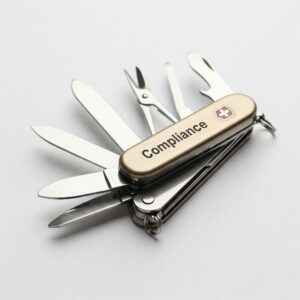In the complex world of financial transparency and compliance, understanding the concept of a UBO (Ultimate Beneficial Owner) is essential. Whether you’re managing compliance for a multinational company or working in financial services, identifying and verifying UBOs is a key step in preventing financial crime, ensuring regulatory compliance, and protecting your business reputation.
This article breaks down UBO meaning, why UBO screening matters, how to find and verify them, and the red flags to watch for.
What Is a UBO?
The Ultimate Beneficial Owner (UBO) is the person who ultimately owns or controls an entity, regardless of any layers of intermediaries or legal structures. These individuals reap the benefits of ownership, whether that’s through profit-sharing or decision-making power, and are often hidden behind corporate veils.
Understanding the AML beneficial owner concept is critical because criminals can exploit complex ownership structures to obscure illicit activities.
Why Are UBO’s Important to Screen?
Uncovering the KYC beneficial owner is central to Anti-Money Laundering (AML) and Know Your Customer (KYC) practices. Regulatory frameworks worldwide, including FATF recommendations and the EU AML directives, mandate identifying and verifying UBOs to:
- Prevent money laundering and terrorist financing.
- Avoid financial penalties for non-compliance.
- Protect your organization from reputational damage.
Failing to conduct proper UBO registry checks can result in hefty fines, legal consequences, and exposure to bad actors.
How to Find a UBO
Finding a UBO requires thorough due diligence. Here are some key steps:
- Access Public Registers: Many jurisdictions maintain UBO registries where companies must declare their ultimate beneficial owners. These can be a valuable starting point.
- Review Corporate Documentation: Scrutinize shareholding structures, organizational charts, and legal documents to trace ownership.
- Use Technology and Databases: Advanced AI tools and commercial databases can help identify UBOs by linking data points across jurisdictions and entities.
How to Verify UBO Data
Once identified, it’s crucial to verify the AML beneficial owner information. Here’s how:
- Cross-Check Multiple Sources: Validate information against public records, financial disclosures, and official ID documents.
- Monitor for Changes: UBO’s can change due to restructuring or new ownership. Regular checks help maintain compliance.
- Conduct Enhanced Due Diligence: For higher-risk entities, dive deeper into their ownership structures, especially in jurisdictions with weak UBO disclosure laws.
Red Flags When Identifying UBOs
Be alert to these red flags when screening for UBOs:
- Complex Ownership Chains: Layers of entities across multiple jurisdictions could indicate attempts to obscure ownership.
- Offshore Companies: Businesses registered in tax havens may hide UBO’s involved in illicit activities.
- Inconsistent or Missing Information: Discrepancies in corporate documents or resistance to providing UBO details are red flags.
- Connections to PEP’s: Politically exposed persons (PEP’s) as UBO’s may pose higher risks of corruption.
Conclusion
Screening and verifying UBO’s is a cornerstone of modern compliance practices. By leveraging UBO registries, conducting diligent checks, and watching for red flags, businesses can protect themselves against financial crime and ensure regulatory adherence.
In the fight for financial transparency, understanding the KYC beneficial owner is more than a box-checking exercise—it’s a commitment to integrity.







